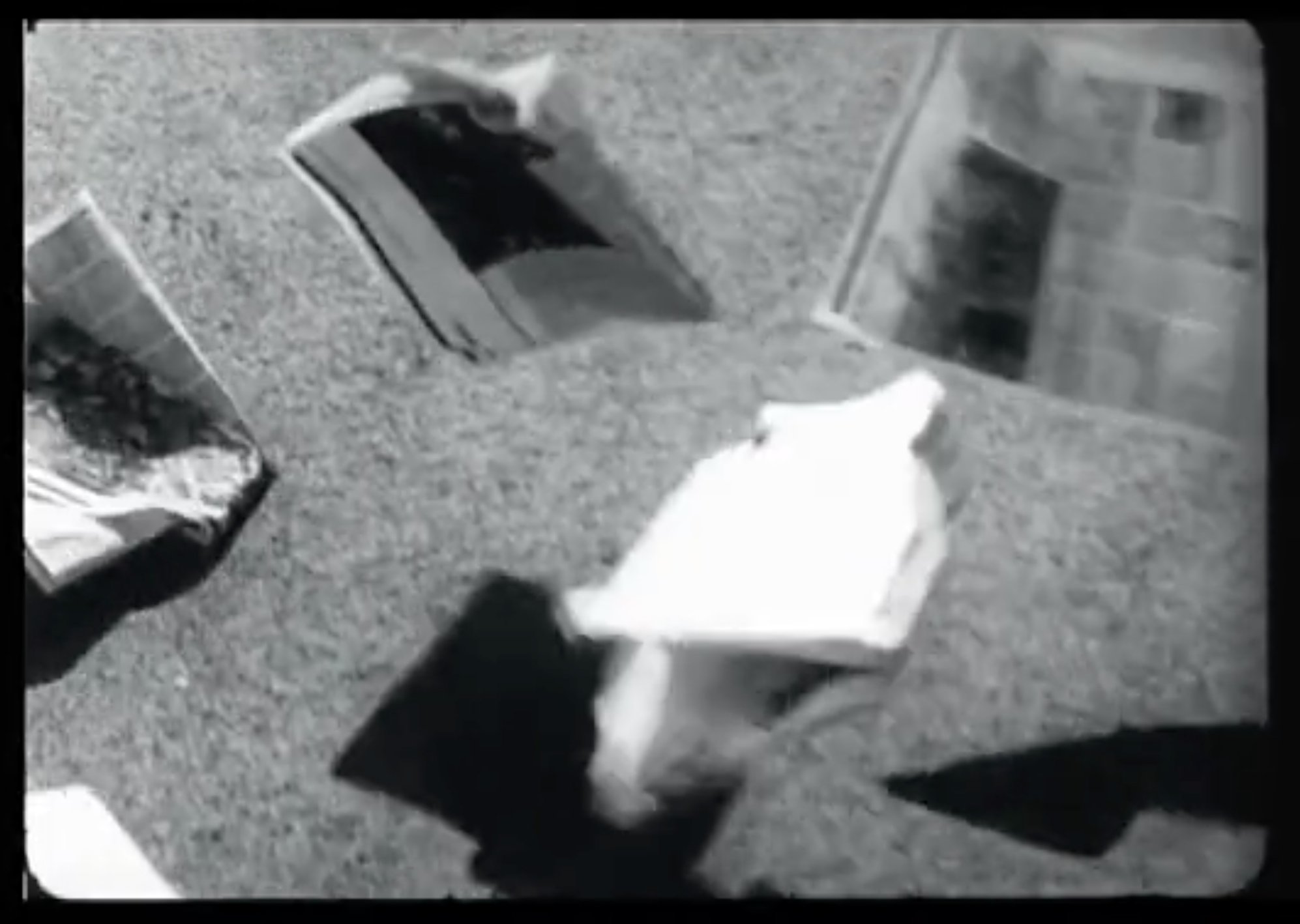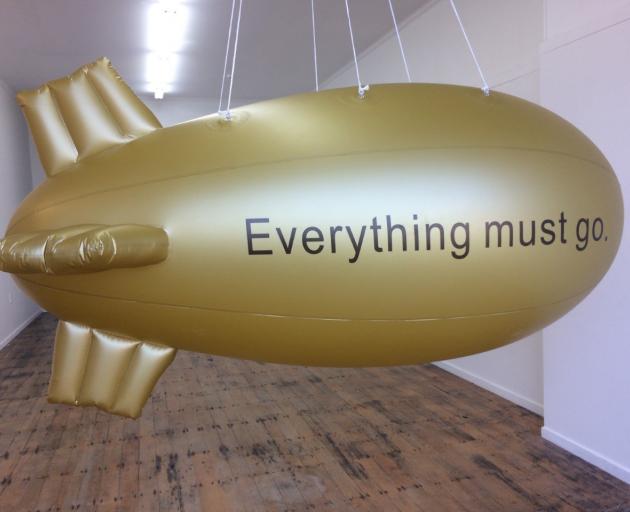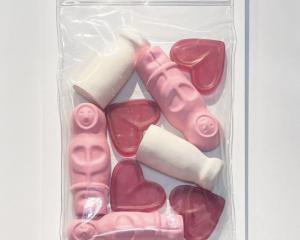In this week's Art Seen, Robyn Maree Pickens looks at exhibitions from Sonya Lacey, Michael Hight, and Elizabeth Pointon.
 Newspaper for Vignelli 2010, by Sonya Lacey
''Newspaper for Vignelli'', Sonya Lacey (DPAG Rear Window)
Newspaper for Vignelli 2010, by Sonya Lacey
''Newspaper for Vignelli'', Sonya Lacey (DPAG Rear Window)

In Sonya Lacey's short, black-and-white film-based work, pages from a newspaper are caught, tumbled and otherwise buffeted by the wind as they travel across the ground. Like the original design proposed by Massimo Vignelli of the European Journal (c1978) that is widely known but was never implemented, Lacey's Newspaper for Vignelli will never be read by its dedicatee, who passed away in 2014, nor even by the viewer in this presentation, as the wind moves it along too quickly for our eyes.
There is nevertheless a generosity to Lacey's archival impulse, as she painstakingly re-created her newspaper in the modernist style advocated by Vignelli. Her film is both a homage to Vignelli and a commentary on the archive itself, particularly with regards to accessibility and dissemination.
Some documents, Lacey's film suggests, will only exist as figments, excerpts, or may never be preserved. This investigation into the potential intractability of archival texts (in a world also saturated with seemingly unceasing data) fits Lacey's interest in language, communication, and information systems in her wide-ranging practice that encompasses video, installation, and performance.
In this work, the interaction between the newspaper pages and the wind performs a spaciousness as it wrests the texts from our grasp. Interestingly, the effect of this action, despite the mode of print, reminds us that we cannot consume all the data flying around us.
 Awatere Valley 2019, by Michael Hight
''Tributary'', Michael Hight (Milford Galleries)
Awatere Valley 2019, by Michael Hight
''Tributary'', Michael Hight (Milford Galleries)

Tributary, by Michael Hight, is a comprehensive exhibition of 28 oil-on-linen paintings that are inspired by 14 rivers in the South Island. The exhibition title contains a trace of the river system itself, and is also a tribute to South Island rivers. For each river, Hight has painted a beehive painting - for which he is renowned - and a nocturnal or night painting. Both the photorealist daytime paintings of beehives and the surrealist-tinged nocturnal paintings are meditations on the colonial impulse to possess the land. However beguiling the beehive paintings may appear, there is always a strong undercurrent of unease. These are landscapes in which there is infrastructural evidence of human interactions with the land, but never humans themselves, nor as far as I can see, bees themselves. This intentional omission speaks volumes, but it is in the nocturnal paintings that some of these tensions are given precise visual form.
Many of the night paintings derive their physical and compositional structure from architectural forms of containment and compartmentalisation such as open-faced display cases. Within these cramped spaces, Hight paints various objects related to the beehive location that include miniaturised beehives, water tanks, mountain ranges and tools. Such compartmentalisation of objects and landforms can be read as a psychological and physical account of Western separation from the land. As engaging as these are, I was struck by a clay vessel hovering with heavy finality over the Awatere Valley.
 Better living everyone 2019, by Elizabeth Pointon
''Better living everyone'', Elizabeth Pointon (Blue Oyster)
Better living everyone 2019, by Elizabeth Pointon
''Better living everyone'', Elizabeth Pointon (Blue Oyster)

Elizabeth Pointon's exhibition at Blue Oyster comprises a long golden lozenge of an inflatable zeppelin hanging in the gallery's main window, and a short video work in the back space that is part documentation of, and part contextualisation for, the zeppelin.
As with the exhibition title, ''Better living everyone'', an advertising slogan which TV viewers may remember, the zeppelin sports another sales slogan, ''Everything must go.''
The two appear in the video work as subtitles towards the end, after the zeppelin has been blown up.
In the beginning, Pointon attempts to inflate the zeppelin with her own breath but abandons this for a hand-held pump early in the process. While she is engaged in these two activities, yellow subtitles appear urging the viewer to find a quiet space, settle comfortably, ground themselves, relax, breathe in through the nose and out through the mouth. Pointon melds the language of pranayama meditation with the action of inflating a zeppelin. Perhaps the corresponding exhalation of breath for the zeppelin will only occur when it is deflated at the end of the exhibition.
Pointon's work seems to achieve a coeval status between the act of meditative breathing and the commodified language of coercive advertising. It is difficult to unseat or recuperate the persuasive pervasiveness of earworm advertising, or to imbue it with richer significance, even when it is yoked to meditation practice.
-By Robyn Maree Pickens








![Untitled (c. mid 1990s, [pink 3]), by Martin Thompson, 415mm×590mm. Photo: courtesy of Brett...](https://www.odt.co.nz/sites/default/files/styles/odt_landscape_small_related_stories/public/story/2024/02/untitled_pink_3.jpg?itok=Q0aQrc9o)



